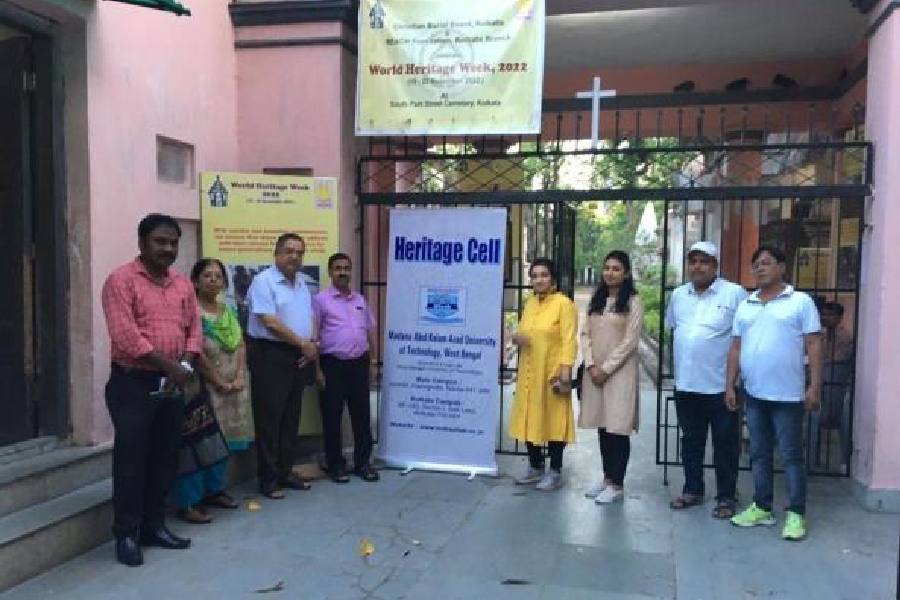Conservation lessons for MAKAUT students at South Park Street Cemetery


The South Park Street Cemetery turned into a classroom on Thursday for a handful of heritage conservation students of the Maulana Abul Kalam Azad University of Technology (MAKAUT).
The on-site lecture for the students by archaeological engineer Tapan Bhattacharya, who has retired from the Archaeological Survey of India (ASI), demonstrated techniques for cleaning and repairing the old tombs at the cemetery.
On-site demonstrations are always more helpful than classroom lectures, said the students who had gathered at the cemetery around four in the evening for the hour-long class.
The university’s heritage cell runs a postgraduate diploma course on heritage conservation.
Most students are professionals, including an IPS officer and a college lecturer, who attend the course after office hours.
Bhattacharya, who is a guest teacher at the institute, said: “There is a lot of difference between carrying out repairs in an ordinary matchbox building and a heritage structure. I demonstrated how to clean up and repair the masonry structure of the standing tombs at the cemetery. We had run a pilot project on behalf of Reach Foundation, which undertook the repairs of tombs at the cemetery. I showed the students how we used compounds to clean up the tombs.”
The former deputy superintending archaeological engineer, ASI, along with Surajit Maity, who retired from ASI as director (chemist), undertook the repairs at the cemetery on behalf of Reach Foundation recently.
“I showed the students how we used non-ionic detergent for cleaning purposes. After cleaning, a preservative coat was applied, the chemical composition of which is decided by the archaeological chemist in accordance with the performance need of the building materials and also the state of dilapidation of the building materials that are being treated,” said Bhattacharya.
Commenting on how it is more effective to demonstrate on-site, the archaeological engineer said: “Rather than lecturing students in class on how a plaster of lime and sand is as effective as a cement plaster, they will learn better if you take them to the site and show them.”
Bhattacharya has held such on-site training sessions earlier, too, with students of the Institute of Archaeology.